It’s been said before and it’s true: a healthy scalp is key to healthy hair. But for those dealing with pesky and sometimes painful scalp conditions like seborrheic dermatitis, that can be easier said than done. That’s why we turned to a top dermatologist for the best seborrheic dermatitis treatment options available today that help calm inflammation, flakes and more to improve skin, scalp and hair health. Plus, one woman shares her journey with seborrheic dermatitis and the treatment that’s worked for her to cut down on scalp irritation and regain her confidence.
What is seborrheic dermatitis?
“Seborrheic dermatitis is an inflammatory scalp condition. It is thought to be caused by an inflammatory response to yeast on the scalp,” says Heather Woolery-Lloyd, MD, a board-certified dermatologist in Miami and founder of DermFriends. “People with seborrheic dermatitis often complain of itching, stinging, burning, flaking and scaling on the scalp.” She notes that while seborrheic dermatitis most frequently affects the scalp, “it can also affect areas like the eyebrows, behind the ears, the sides of the nose and the chest.”
How does seborrheic dermatitis differ from dandruff?
“Dandruff is flaking or scaling on the scalp and is a common symptom of seborrheic dermatitis, says,” Dr. Woolerry-Lloyd. It’s also considered a mild form of seborrheic dermatitis as there’s less redness and irritation. But what makes the two different is that dandruff only occurs on the scalp, while seborrheic dermatitis can occur in other areas besides the scalp as mentioned above.
How does seborrheic dermatitis affect scalp and hair health?
“People with seborrheic dermatitis often have flaking and scaling on the scalp. Other symptoms include burning, stinging and itching. The inflammation from seborrheic dermatitis causes a disruption of the skin barrier on the scalp,” says Dr. Woolerry-Lloyd. “It does not usually affect the hair, but in severe cases, especially when there is severe scratching, it can cause thinning or breakage of the hair.”
Seborrheic dermatitis treatment options
There are a number of over-the-counter and prescription seborrheic dermatitis treatments that can help with the condition. Dr. Woolerry-Lloyd breaks them down below.
Over-the-counter seborrheic dermatitis treatments
“Over-the-counter treatments include antifungal shampoos with ingredients like zinc pyrithione, ketoconazole and selenium sulfide,” notes Dr. Woolerry-Lloyd. All of these ingredients target and kill yeast on the scalp along with reducing irritation.
Dr. Woolerry-Lloyd says other OTC options include salicylic acid- and tar-infused shampoos. Both salicylic acid and tar gently exfoliate skin to remove a buildup of dead, dry skin cells that can worsen seborrheic dermatitis.
It’s important to note that some OTC and at-home seborrheic dermatitis treatments can backfire since they are too harsh on the scalp. “There was a trend where people used apple cider vinegar, which actually can be very irritating on an inflamed scalp and can make things worse,” explains Dr. Woolerry-Lloyd. Additionally, “many people with this condition will cycle through different OTC treatments, shampoos, and anecdotal recommendations from friends and family. They may be less likely to see a dermatologist because there is less awareness of prescription treatment options for this condition (compared to acne for example),” she says. “So I would definitely recommend that patients see a dermatologist. There are excellent prescription options that can help to manage this condition.”
Prescription seborrheic dermatitis treatments
“Dermatologists have prescribed topical steroids to help reduce the inflammation caused by seborrheic dermatitis,” says Dr. Woolerry-Lloyd. The one downside about treatments with steroids is that overuse can lead to side effects, especially on facial skin, such as the thinning of skin, causing veins to be more visible and making you more susceptible to infections.
For a steroid-free option, Dr. Woolerry-Lloyd points to the newest prescription treatment, Zoryve foam. “It is the first FDA-approved treatment for seborrheic dermatitis in 20 years,” she says. Some more pros about this seborrheic dermatitis treatment is that it’s a lightweight foam that is alcohol-free and quickly absorbs. “It’s also safe for color-treated hair and works in all hair types and textures,” adds Dr. Woolerry-Lloyd. Best of all, Zoryve can also be used on the face, making it an all-in-one treatment—plus, it only needs to be applied once a day, unlike many other prescriptions that require two daily applications.
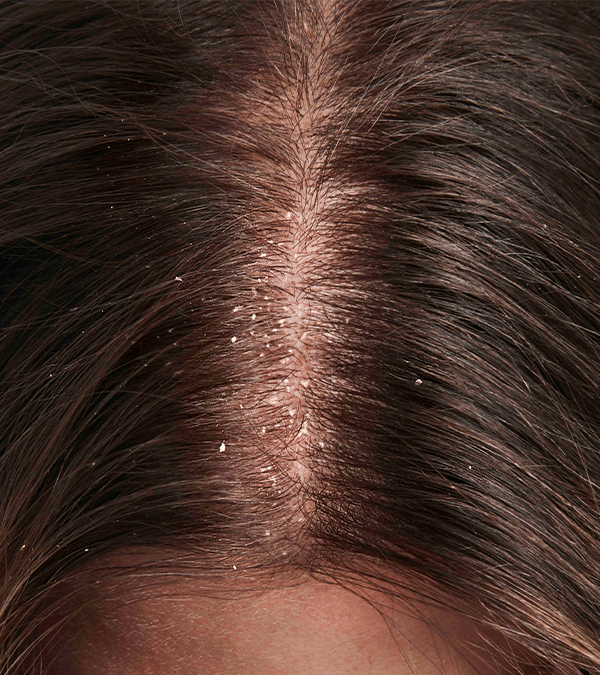
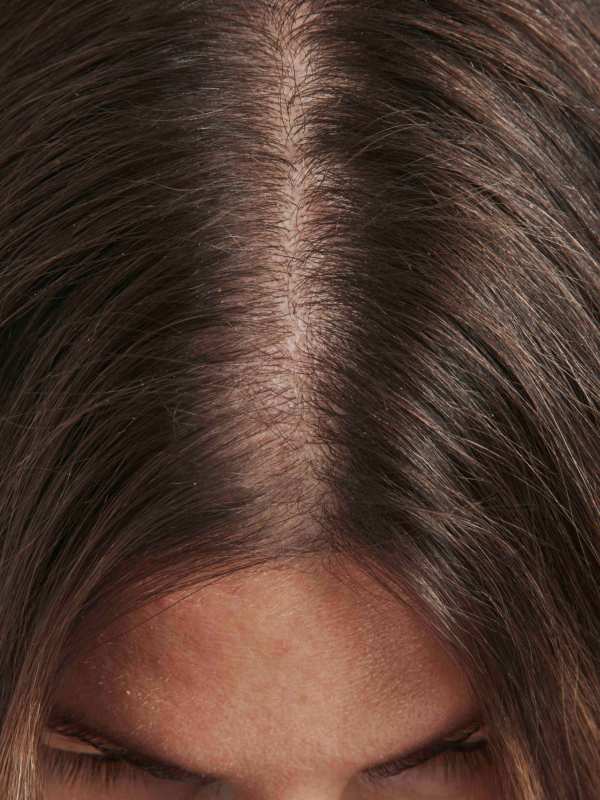
“In the clinical trials, 77% of patients who were treated with Zoryve were clear or almost clear at the end of the eight-week trial. It’s important to note that itch is the most burdensome symptom of seborrheic dermatitis,” says Dr. Woolerry-Lloyd. She also notes that in these clinical trials, patients reported a significant improvement in itch was within 48 hours of use. “They also looked at quality of life and noted that patients treated with Zoryve had significant improvements in their quality of life.”
One woman’s journey with seborrheic dermatitis
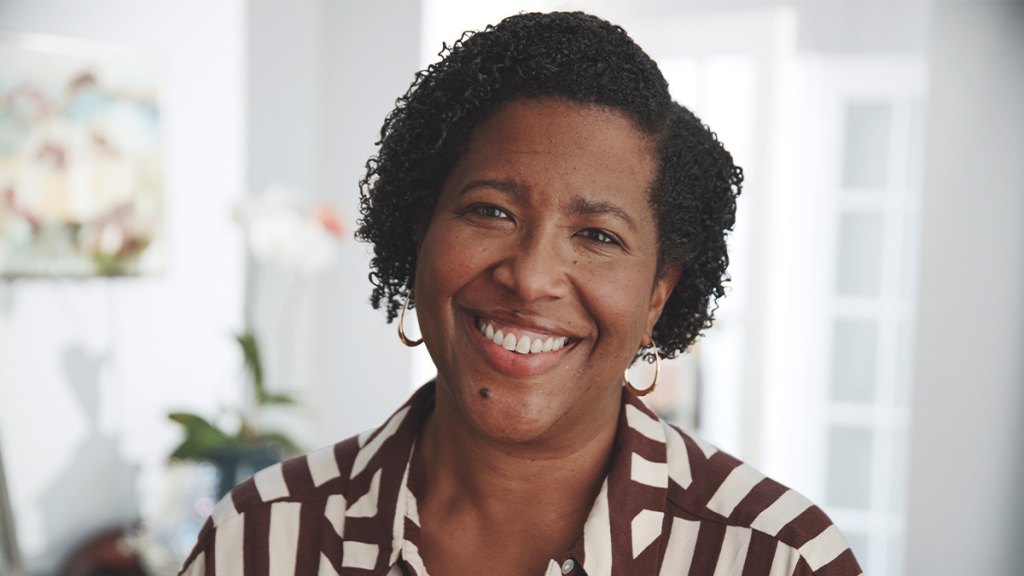
Grace’s (pictured above) earliest memory of dealing with seborrheic dermatitis was when she was 8 years old. “There was a lice outbreak at my school and I remember very distinctly going to the nurse’s office and they were checking hair,” she says. “I was getting paranoid and was wondering if there was really a lice outbreak or if they not trying to single me out. But there really was a lice outbreak and they were checking scalps.”
Grace recalls when it was her turn that she doesn’t remember what exactly the nurse said to her but the physical reaction and sentiment when her scalp was looked at resulted in a note being sent home with her. She was also asked by the nurse “how many times do you wash your hair?” Grace says, “That experience made me an insecure child, teenager and woman…thankfully I’m finally now breaking out of that, but that experience stayed with me and made me realize that something was wrong.”
How Grace got diagnosed with seborrheic dermatitis
After that Grace remembers seeing various dermatologists as a kid, saying “at that point I had seborrheic dermatits on other points on my body like on my face, my hairline and my eyebrows. I was in and out of the dermatologist a lot.” She says that it wasn’t until she was 12 that she got an official diagnosis of seborrheic dermatitis and that she started to get treatment from doctors for the condition. “Those treatments were topical creams or shampoos with different ingredients to help with seborrheic dermatitis.”
Chemical relaxing treatments made her seborrheic dermatitis worse
“What I was dealing with was more than dandruff, it was inflammation and redness,” says Grace. “It really started to get bad when I got chemical relaxers in my hair, which I’ve had done since a very young age because it made my hair more manageable.” Relaxing treatments are notoriously harsh on hair and the scalp, which Grace notes they aren’t meant to touch the scalp but they do inadvertently because you have to start at the roots. “I would get flare-ups [after a treatment]—there was redness, inflammation, and it would literally burn or singe my scalp because my scalp was exposed. It was raw,” she says. “I did so many things to prevent that from happening or to mitigate the burn.”
Grace says getting relaxing treatments done was the most high maintenance and impactful when she was coming of age. “I was trying to look the way that I thought you should look in the school setting and a professional setting.” One of her hairdressers even told her to thoroughly grease her scalp before a treatment so the relaxer wouldn’t touch her scalp in order to create a bit of a buffer. And this did help somewhat, but it also exasperated her seborrheic dermatitis.
“It was just like an endless cycle of, you know, preparing my scalp for the chemical relaxer, but then dealing with the burn,” says Grace. “I literally had scabs sometimes after I had the relaxer because of what it would do to my scalp.” Ultimately she stopped getting relaxers done about 12 years ago. “Around that time there was a lot online about empowering black women about putting down the ‘cream and crack’ because you also start to learn like maybe it’s not the best for us like the things they put in this chemical [treatment].”
Things Grace tried to treat seborrheic dermatitis
At one point Grace would travel with an emergency kit with multiple things to help treat her scalp. “I am used to having a whole arsenal of stuff to deal with seborrheic dermatitis because even though one thing works this week, it might not work the next week,” she says. And if she’s traveling certain things might work in one climate but not in other climates. Plus, “I think my skin got used to it and I never knew what it would respond to. Whether it’s the redness like one thing would treat redness, but not flakiness. One would treat the flakiness but not the inflammation. So I would have something for everything.”
Grace says she would even include random things, “it would be like it was a MacGyver-type kit.” One item would be a travel-size mouthwash. “ I would use that to lift the flakes,” she says. “If I saw a flake here, I would use it and a Q-tip to lift it so that I wasn’t scraping it and irritating it.” The reason for being prepared for anything was because she says that “sometimes creams just didn’t work but ointments were better but it also made me look greasy. The ointments were better for my scalp but also heavy on my hair and skin.”
“I can’t tell you how many dermatologists I’ve seen or talked to in my lifetime,” says Grace. “I feel like many of them didn’t really entertain my concerns about hair. I would even say ‘oh that dries my hair out’ and they’re like ‘well that’s what works.’” She says she finally found ‘the right doctor to talk to about it and she entertained my questions about hair and my social concerns and took it seriously. She even told me that she has a light version of [seborrheic dermatitis] herself so she helped to destigmatize it for me.” And through that doctor, she was introduced to a seborrheic dermatitis treatment that made a huge difference.
The seborrheic dermatitis treatment that worked for her
As mentioned above, over the years Grace has tried many seborrheic dermatitis treatments, but now she’s been using the Zoryve foam and is singing its praises. Her ah-ha moment of using this prescription foam came after she got a blowout and was nervous to apply the medication to her hair, worrying it would cause her strands to become frizzy, But to her surprise, it absorbed into her skin immediately and left her blowout intact. “I was like woah, this is a game-changer.”
Besides working well to manage her seborrheic dermatitis, Grace says “one of the biggest difference makers with Zoryve is that it’s just one thing and unlike any other topical treatment that I’ve tried,” she says. And while she still keeps an emergency kit handy, she’s not reaching for it as often now that she’s found a treatment that works and in turn has helped her regain her confidence.
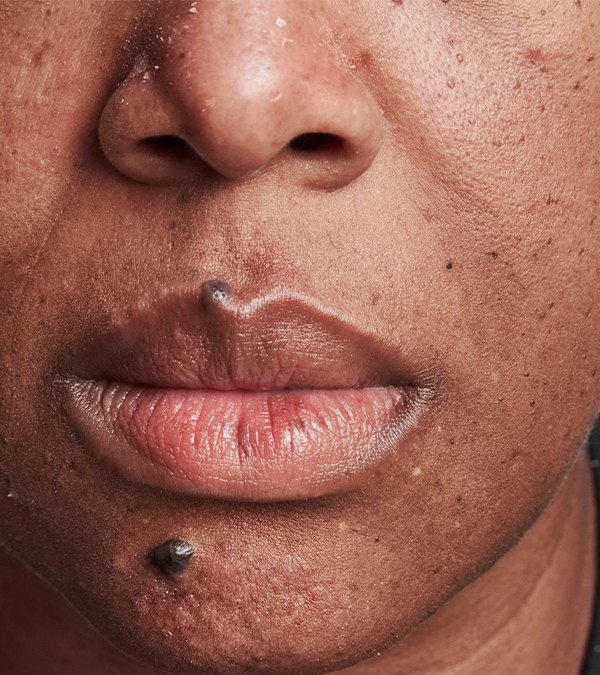
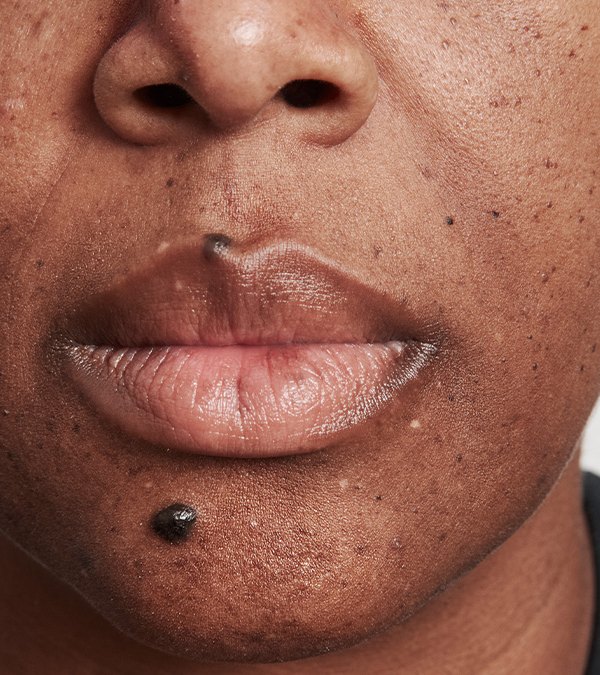
“I’m on a journey to feel more comfortable in my skin and learn from other people who’ve dealt with it [seborrheic dermatitis],” says Grace. “There’s also freedom in talking about it and finding people who are on the same journey. There’s no shame in having seborrheic dermatitis. I have to still remind myself I didn’t do anything wrong here.”




